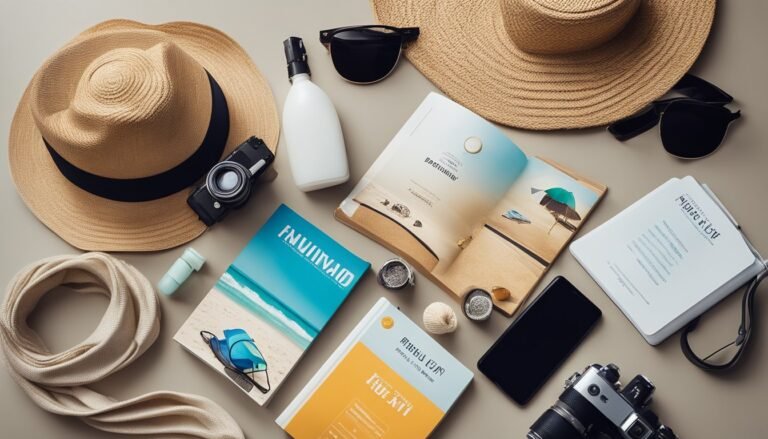Plant a Container: Expert Tips for Thriving Indoor Gardens

Thinking about plant a container garden? It’s a great way to add greenery to small spaces like patios or balconies. Whether you’re a beginner or have a green thumb, container gardening can be both easy and rewarding. Choosing the right container and soil mix is crucial for a successful garden. Containers should have good drainage, and using an all-purpose potting mix will help your plants thrive.
To get started, you’ll need to pick out the best plants for your container garden. Some plants grow better in pots than others, so it’s important to match your plants to your container size. Make sure to consider the moisture requirements for each plant, especially if you’re combining different types in one pot. Proper watering and feeding will also keep your garden healthy and vibrant.
Key Takeaways
- Choose containers with good drainage and an all-purpose potting mix.
- Match plants to container size and consider their moisture needs.
- Regular watering and feeding are essential for healthy plants.
Choosing the Right Containers

Choosing the right container for your plants involves considering the material and deciding the appropriate size and depth. Both of these factors are crucial for the health and growth of your plants.
Material Considerations
When selecting a container, the material is essential. Containers can be made from plastic, clay, wood, or metal. Plastic containers are lightweight and retain moisture well, making them a good choice for beginners. Clay pots are heavier and more porous, allowing for better air circulation, but they dry out faster. Wood containers offer a natural look and good insulation against temperature changes, but they can rot over time. Metal containers are durable and modern-looking, but they can heat up quickly, which may stress plants.
Each material has its pros and cons, so it’s important to choose one that suits your specific needs and the requirements of your plants. For example, plastic containers may be ideal for those who live in warm climates because they keep the soil moist longer.
Size and Depth Requirements
The size and depth of the container affect how well your plants will grow. As a rule of thumb, the container should be about half the height of the plant. This means a 9-inch pot is suitable for an 18-inch plant. Larger plants or those with deep root systems, such as tomatoes or shrubs, need deeper containers.
Plants like herbs or succulents do well in shallow containers. Tall containers suit tall plants, ensuring stability and proper root growth. Medium containers work well for a combination of trailing and upright plants. Using appropriate-sized pots ensures plants have enough room to grow and do not become root-bound, which can stunt their growth.
Selecting Plants for Your Container

Choosing the right plants for your container is key to ensuring healthy growth and an attractive display. Focus on the needs of the plants and the space available to match the best choices.
Vegetables and Edibles
For a bountiful container vegetable garden, pick vegetables and herbs that thrive in pots. Tomatoes, peppers, lettuce, and herbs like basil and parsley are good options. Smaller varieties like cherry tomatoes and baby carrots do well in containers due to their compact size.
Use pots that are at least 12 inches in diameter for most vegetables. This ensures enough room for roots to grow. Also, ensure the containers have drainage holes to prevent waterlogging. Regular watering and using a quality potting mix are critical for optimal growth.
Flowers and Ornamentals
When planting flowers in containers, choose a mix of thrillers, fillers, and spillers. Thrillers like ornamental grasses or tall flowers add height. Fillers such as petunias or marigolds provide mass and color. Spillers like ivy or sweet potato vine cascade over the sides, adding depth.
Consider sunlight and temperature tolerance when selecting flowers. Some plants, like coleus, thrive in shade, while others, like geraniums, need full sun. Mixing different textures and colors can create an eye-catching display. Use a good potting mix and ensure proper drainage for the best results.
Planting Techniques
When planting in containers, it’s important to choose the right soil mix, properly arrange and space the plants, and ensure proper watering and drainage.
Soil and Compost Mixes
Using the right soil mix is crucial for healthy container plants. Potting mix designed for containers works best, as it provides good drainage and aeration. Avoid using garden soil, which can compact and hinder root growth.
Adding compost boosts nutrients and improves soil structure. For seasonal plants, consider adding a slow-release fertilizer like Osmocote to feed them for months. For some plants, a polymer additive can also help retain water, reducing the need for frequent watering.
Using the right mix ensures plants have the nutrients and structure they need to thrive.
Plant Arrangement and Spacing
Arranging and spacing plants correctly is key to a successful container garden. Place taller plants in the center or back of the container, with smaller plants around them. This allows each plant enough light and air.
Proper spacing helps prevent overcrowding, which can lead to poor growth and disease. Larger vegetables, like tomatoes, need at least a 12-inch deep container, while smaller plants, like lettuce, need less space.
Ensuring plants have enough room to grow encourages healthier and more productive plants.
Watering and Drainage
Watering and drainage are vital for container gardening. Containers can dry out quickly, so regular watering is essential. The amount and frequency depend on the plant type, pot material, and climate. Always check soil moisture before watering to avoid overwatering.
Proper drainage is crucial to prevent root rot. Ensure your pots have drainage holes. If not, add them. Without proper drainage, excess water can accumulate, harming the plants.
Good watering practices and drainage keep container plants healthy and thriving.
Ongoing Care and Maintenance
Container gardening requires consistent attention to keep the plants healthy and productive. Key aspects include proper fertilization, effective pest and disease management, and making necessary seasonal adjustments.
Fertilizing and Nutrient Management
Proper fertilization ensures that container plants receive the nutrients they need. Use a balanced fertilizer, such as a 10-10-10 blend, at half-strength every 2-3 weeks. Liquid fertilizers can be easily mixed with water and applied during regular watering. Follow the package instructions to avoid over-fertilizing, which can harm plants.
Organic options like compost tea or fish emulsion are also effective. They improve soil health while providing essential nutrients. Monitoring foliage color and growth indicates if the plants need more or fewer nutrients. Yellowing leaves may signal a nutrient deficiency.
Pest and Disease Control
Maintaining clean containers helps prevent pests and diseases. Regularly remove fallen leaves and debris to avoid creating a habitat for insects and fungi. Inspect plants weekly for signs of pests like aphids or spider mites. If pests are found, use insecticidal soap or neem oil.
Diseases can often be controlled by improving air circulation around plants. Space your containers adequately and avoid over-watering. Water at the base of the plants rather than overhead to prevent leaf mold and mildew. Quarantine any infected plant to avoid spreading issues to healthy plants.
Seasonal Adjustments
Seasonal changes require adjustments in care routines. In summer, water containers more frequently because the soil dries out faster. Early morning watering reduces evaporation loss. During the colder months, reduce watering since the growth rate slows down.
For container vegetable gardens, be prepared to bring plants indoors or use protective covers during frost. Some plants may need additional lighting or heating, especially if they are not frost-tolerant. Maintain a consistent temperature and minimize fluctuations to keep plants healthy.
Regularly rotate the plants to ensure even light exposure, particularly for those growing indoors during winter. Adjust fertilization schedules to match the changing growth rates throughout the season. These practices help in maintaining a thriving container garden.






